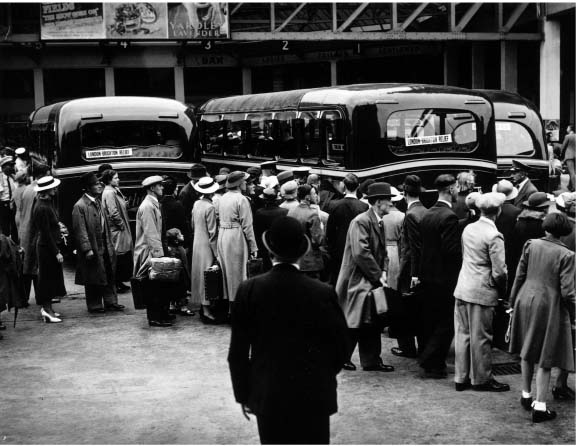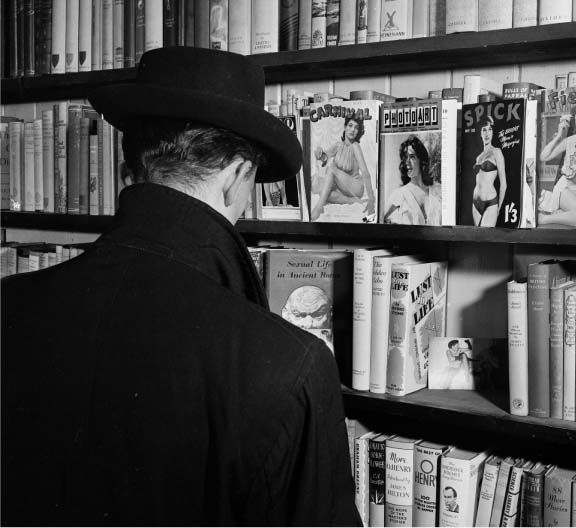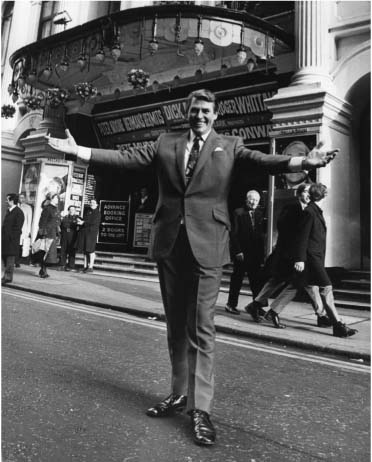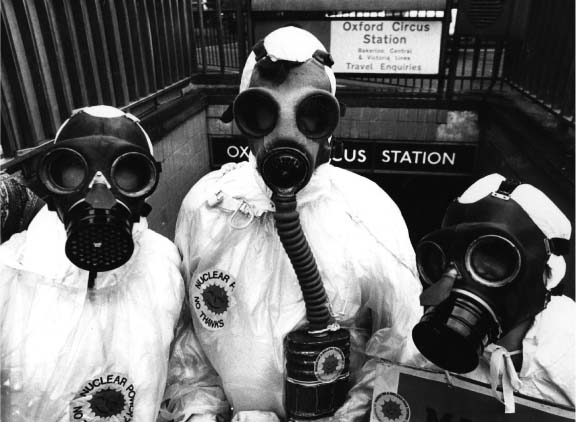Lyttelton's Britain (4 page)
Read Lyttelton's Britain Online
Authors: Iain Pattinson
For many years, the borough of Hammersmith was home to the White City athletics venue. It was completed just in time for London to host the 1908 Olympics, which were originally scheduled to take place in Rome. But just a month before the games were due to start, Mount Vesuvius erupted with an almighty explosion, at which point Italy immediately surrendered.
The Hammersmith Studios were once the home of the satellite channel Live TV, which was responsible for putting Topless Darts on our screens. And in the cause of research for this book,
I was supplied with a DVD of it. I can’t possibly describe quite how disgusted I was by the sight of the big wobby breasts of Jocky Wilson and Eric Bristow.

A question mark hangs over the future of the Hammersmith light bulb factory
Sadly now long gone, the Osram manufacturing plant was at nearby Brook Green. Since the factory closed down, it’s been empty for many years while debates rage amongst a succession of redevelopers about how best to convert the building. So we still don’t know how many architects it takes to change a light bulb factory.

P
ERHAPS THIS AREA’S
most famous attraction is Tate Britain, the art gallery established on the site of the old Millbank Prison. During recent renovation work, evidence of the building’s previous use was discovered in the form of a slopping-out bucket which had lain un-emptied for over a century. A workman in breathing apparatus dragged the fetid bucket out into the main hall, where it promptly won that year’s Turner prize. A strange piece of art, maybe, but one judged by critics to be particularly fine, as the flies follow you round the room.
The gallery was founded by the philanthropist Henry Tate who made his millions from selling sugar cubes. A statue of him erected in front of the gallery recently needed urgent restoration work, after the teeth fell out.
Attempting to gain wider appeal, the Tate has expanded in recent years, with Tate Modern, Tate Liverpool, Tate St Ives and their touring show: Tate That.
The child prodigy Mozart was brought to London by his parents and lived for a time in Victoria’s Ebury Street, where, at the age of four, he wrote his first two symphonies – in Ah Major and Guh Minor.
In the early 19th Century, French prisoners of the Napoleonic War were housed in prison ships moored on the Thames at
nearby Millbank. However, these ships regularly sank until it was discovered prisoners were tunnelling their way out.
Victoria Station, London’s second busiest railway terminus after Waterloo, services both the Orient and Gatwick Express. In the financial year 2006/07, Gatwick Airport received just over 23 million passengers. It hopes to get them boarded soon.

Victoria Coach Station, boarding a bus with her husband, Derek Coach Station and friends
But a stone’s throw from Victoria Station is the Victoria Palace Theatre, where an early performer was the world-famous ballerina Pavlova. In 1911, the great French chef Georges Auguste Escoffier created a dessert pudding in her honour, which he
delivered to the theatre in person. However, before the dessert could be sampled, the doorbell rang, and Pavlova’s dogs ate it. The famous bronze statue of Pavlova in front of the theatre was removed in 1939. The theatre management can’t say whether its metal was taken for the war effort to make bombs, or whether it ended up in someone’s garden. The answer is: both.
The radio and TV comedian Professor Stanley Unwin made regular appearances at the Victoria Palace. Despite his apparent jolly demeanour, Unwin was in fact a life-long sufferer of clinical depression, admitting to frequent bouts of feeling suicidallo.
The founder of the interior design and furnishings concern, Laura Ashley, lived in Victoria. Once a flourishing business, in the 1990s the company’s financial position declined, and although never actually in the red, they were occasionally in the Autumn Russet.

D
URING
the 17th Century, many settlers moved to Soho from mainland Europe. These included Greek craftsmen fleeing Ottoman domination, as they were unable to compete with discount Turkish sofas.
These were followed by successive waves of refugees escaping religious persecution, including Polish Catholics, French Huguenots and German Lutherans. Evidence of this is found in names such as Greek Street and the famous French House pub, but migrant assimilation wasn’t without its troubles, particularly when the Germans invaded Poland Street.
Despite its seedy reputation, Soho has been the home of many famous names. These include the eminent physicist John Dalton, who pioneered research into colour blindness when he discovered he was unable to distinguish blue light from red. This became apparent when Dalton went into Berwick Street police station, slapped a half-crown on the desk and asked for twenty minutes with Easy Lil from Muswell Hill.
The German philosopher and founder of modern communism, Karl Marx, lived with his family in a small flat in Gerrard Street in horribly overcrowded conditions, until Harpo and Groucho moved out.
Another famous former resident of Soho was author Washington Irving, who in addition to his most famous
work
Rip Van Winkle
, also wrote many other medical textbooks.
In the art world, Soho was home to the artist Canaletto, and it was while living in Soho that he famously painted
Westminster Bridge at Dusk
. Completed in vivid oils, Westminster Council complained they’d only wanted it brushed over with Hammerite.
Hilaire Belloc, the poet and historian, lived in Gerrard Street, in the heart of Chinatown. He lodged there at number 28, or as the locals call it, ‘Special Fried Szechuan Noodles’.

Soho, 1952
In the late sixties, Soho was home to Jimi Hendrix, who overcame his dyslexia to become one of the world’s greatest rock guitarists. Sadly, Hendrix died there in 1970, after choking on his own Vimto.
On Soho’s outskirts is the famous London Palladium. From the 1860s until the turn of the century, the Palladium building was a successful amusements arcade, but as the century turned, fortunes declined. These were reversed in 1906 with the opening of the innovative Oxford Circus tube station, when crowds flocked to gaze in awe at the sight of a moving escalator. London Underground recently announced plans to celebrate the event by repeating the spectacle.

Britain’s greatest pianist, Russ Conway, spent several years staring at the London Palladium
The Palladium building was frequently refurbished and proudly boasted it was the first theatre in Britain to be entirely carpeted, a luxury made affordable in 1910 as it coincided with the start of Allied Carpets’ closing down sale.
With the decline of music hall in the 1920s, the Palladium was refurbished once again and turned to staging great spectaculars, including one show of North American Apache Indians. Sadly, the first night was plunged into darkness, when it was found the theatre had been rewired by a bunch of cow-boys.
Early performances at the Palladium included the novelty act George Robey, who appeared as ‘Burlington Bertie’, the ‘Singing Toilet Bowl’.

Judges setting off for the National Baked Bean Eating Championships
As its fortunes progressed, the theatre attracted big names from America, such as Harry Houdini. It is recorded, however, that his audience became restless as Houdini’s opening night was delayed by nearly an hour, when he got locked in the lavatory. After his death, Houdini’s son inherited his father’s secrets and went on to invent the CD case.